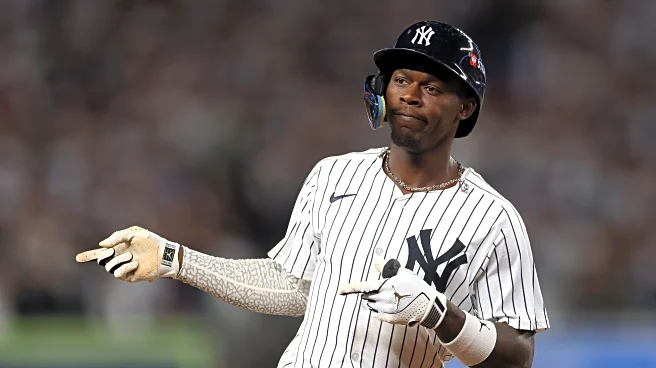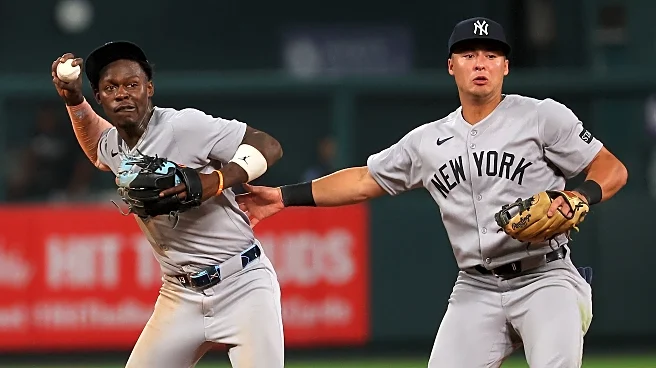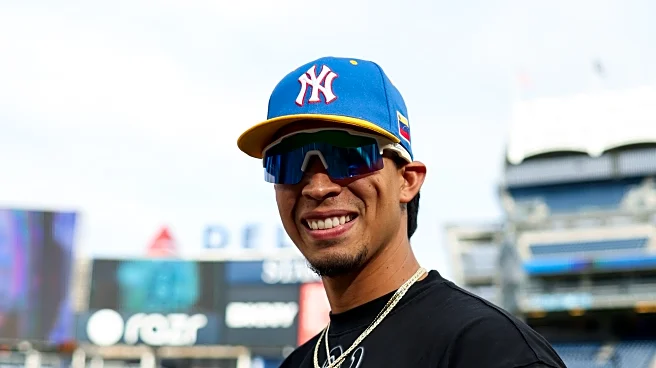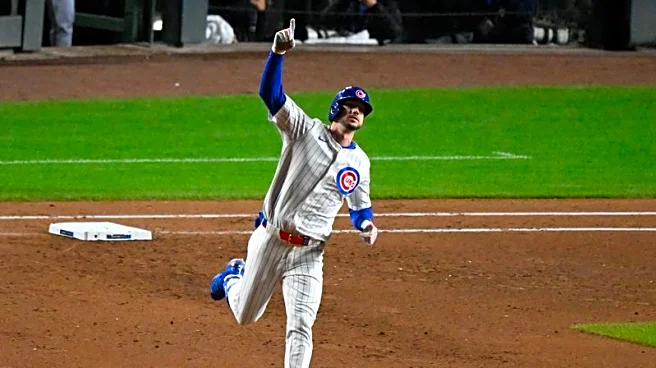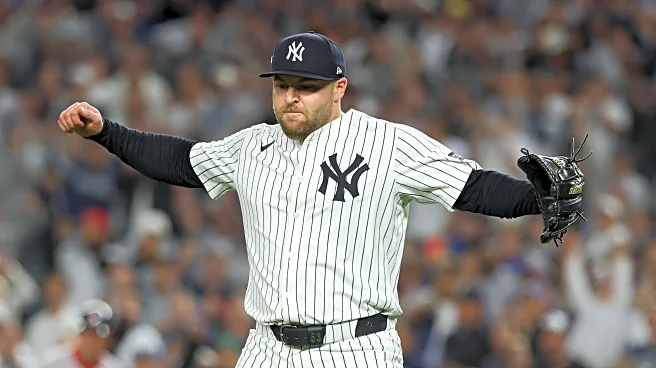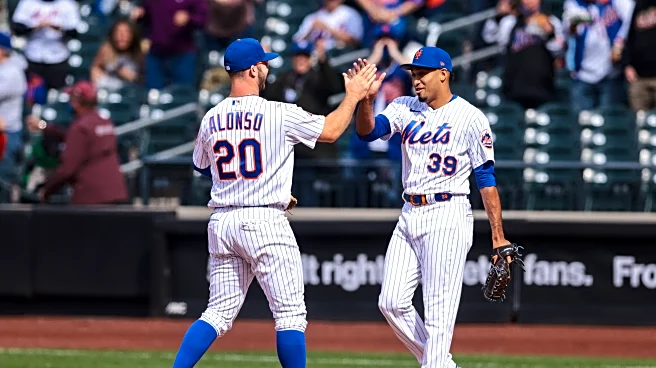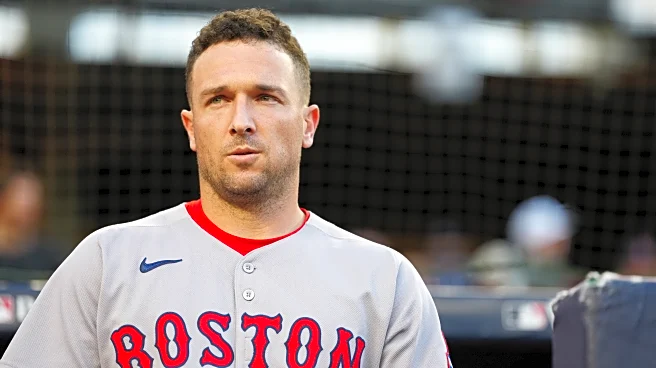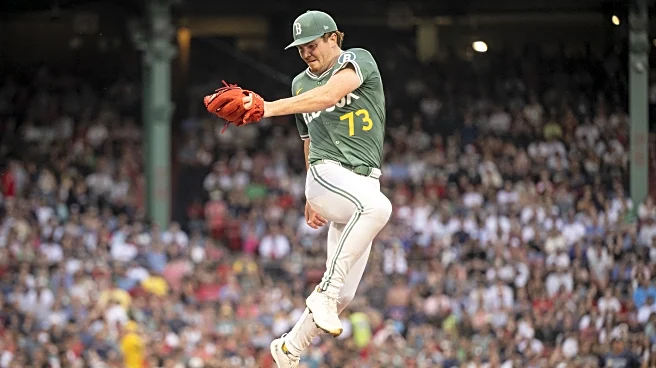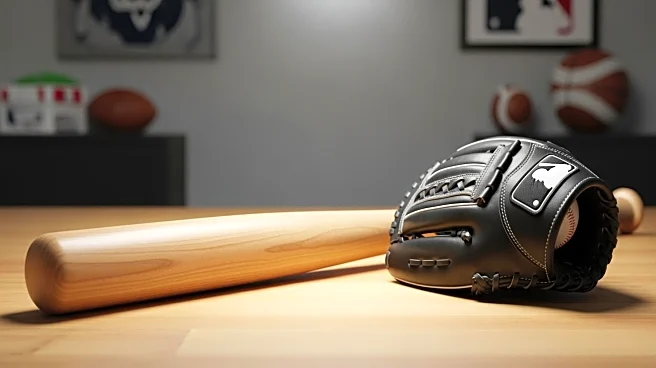Throughout his first full campaign in pinstripes, Jazz Chisholm Jr. built on the success he enjoyed with the Yankees after his midseason arrival from the Marlins in 2024. The 2025 season saw the flashy
infielder finally settle back into his natural second base position, represent the Bombers in the All-Star Game and Home Run Derby, and complete a feat only accomplished by two previous players in franchise history: a 30/30 season. It hasn’t taken long for the potential Chisholm flashed in Miami to coalesce into bonafide star power in the Bronx.
Grade: A-
2025 Statistics: 130 games, .242/.332/.481, 31 HR, 80 RBI, 126 wRC+, 31 SB, +5 OAA, 4.4 fWAR
2026 Contract Status: Entering final year of arbitration (MLBTR projected salary: $10.2M)
Chisholm’s start to the 2025 season was not particularly impressive. Despite hitting seven home runs between March and April, his average lagged below the Mendoza Line. Part of the problem was that Chisholm struggled to catch up to high velocity; I recall noting a few times early in the year that he had not yet gotten a base hit on a pitch at 95 mph or higher. That remained the case until June 14th.
At the end of April, Chisholm—who had returned to his natural second base position after learning third base on the fly last year—suffered an oblique strain and hit the IL, where he would stay for the entirety of May. By the time he returned in June, the Yankees’ situation at the hot corner had deteriorated. Oswaldo Cabrera had suffered a season-ending injury, DJ LeMahieu had fully lost the mobility to cover the position, and Oswald Peraza couldn’t hit a lick to support his solid defense.
Consequently, Aaron Boone decided to return Jazz to third, where he would play regularly for about a full month. Despite having acquitted himself fairly well at third last season, Jazz rated out negatively there this year, with a -4 Defensive Runs Saved score to go along with -3 Outs Above Average. In early July, LeMahieu was designated for assignment, and Chisholm returned to the keystone for good—throughout 2025, he posted a far more characteristic +2 DRS and +8 OAA there.
Despite the subpar fielding work at third, Chisholm’s bat came alive upon his return from injury. He posted his best month at the plate in June, with a .991 OPS and seven more homers. It was safe to say his swing was back where it needed to be. That return to form netted him his second All-Star selection—he was a second base reserve behind former Yankee Gleyber Torres, who enjoyed an excellent first half with the Tigers. Chisholm also participated in the Home Run Derby, though the less said about that particular adventure, the better. Regardless, Jazz continued to produce at the dish at a solid rate throughout the summer, at which point another shift took place.
At the Trade Deadline, the Yankees acquired speedy shortstop José Caballero, the MLB leader in stolen bases, to help shore up their infield depth. Chisholm had been swiping bags at a decent clip, with 14 to his name by the time Caballero came aboard at the end of July. But following that trade, Jazz became a far more aggressive baserunner, and it paid off. He went 11-for-11 on steal attempts in August, and nabbed six more in September to clear the 30-steal mark for the second time in as many seasons. This was great to see from Jazz, as part of the logic for bringing him to the Yankees in the first place was to introduce a speed threat to the lineup and make their offense more multidimensional.
Thanks to that second-half thieving spree and a continually active power bat, Jazz joined an exclusive club with a two-run home run on September 19th at Camden Yards. That blast off lefty Dietrich Enns gave him 30 homers and 30 steals on the year, marking just the fourth such season in Yankees history after Bobby Bonds in 1975 and Alfonso Soriano in 2002 and 2003. The milestone was made more impressive when you consider that Jazz missed all of May, and yet was still able to race to that plateau with more than a week to spare in the regular season.
Of course, regular season accomplishments fade into the background if you can’t come through in the postseason. Chisholm had a bit of a checkered performance in the playoffs, factoring into their wins in their losses in rather equal measure.
On one hand, Jazz was instrumental in turning the Wild Card Series around against the Red Sox. With the Yankees trailing 1-0 in the series and Game 2 tied at 3, it was Chisholm who blitzed from first to home on Austin Wells’ go-ahead single, needing every last bit of the 9.16 seconds it took to slide ahead of the tag and put the Yankees up for good.
Then, in ALDS Game 3, with the Yankees once more against the wall, Jazz’s solo homer off Louis Varland gave them a 7-6 lead, which they would hold onto in a 9-6 comeback win.
On the other hand, Chisholm’s overall body of work at the dish in October was poor: he went just 4-for-22 with 3 walks—that Game 3 homer marked his only extra-base hit and RBI. His performance the following night, ultimately the final game of the Yankees’ season, struck particularly sour notes. With New York trailing 2-1 in the sixth, Jazz came up with two on and two out, and grounded out to second to end the rally. The following half-inning, Chisholm’s error on a grounder by Andés Giménez knocked Cam Schlittler out of the game and set the stage for the Jays to extend that lead to 4-1 on a single by Nathan Lukes. The Jays prevailed by that three-run margin and dealt the Yankees out on their way to an AL pennant.
Chisholm obviously does not deserve all the blame for what transpired in that final game, and for the overall sluggishness of the Yankee offense. But just as his highlights were impactful, his mishaps loomed large. That has routinely been the case for the guy; he can take your breath away with a spectacular play one night, then commit a baffling blunder the next.
Still, given the level of production Jazz has provided for the Yankees since arriving a season and a half ago, it’s a fair trade-off to make. And the endlessly confident Chisholm doesn’t think for a minute that 30/30 is his ceiling. Immediately after accomplishing the feat, Chisholm was asked about a potential 40/40 campaign in the future.
“I think I’ve been saying that since I was a rookie,” Chisholm told reporters. “I definitely think 40/40 is achievable with a full, healthy season.
Now that would be a sight to see. Of course, entering a contract year, there’ll be just that extra bit of motivation to get it done. Even if he doesn’t reach such lofty heights, however, he should continue to be a crucial core player for the Yankees—and one of their most enjoyable guys to watch—as they once again gear up to go for title No. 28.
